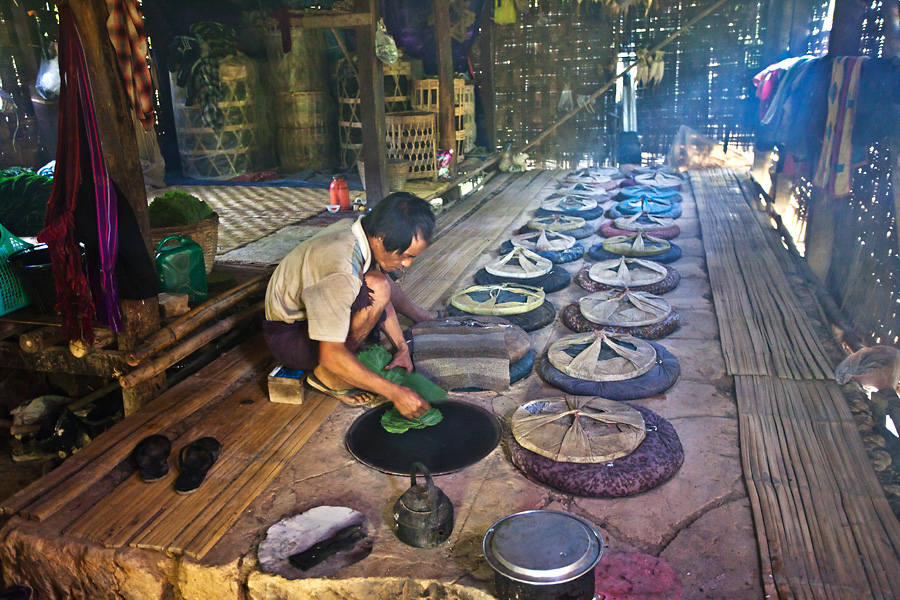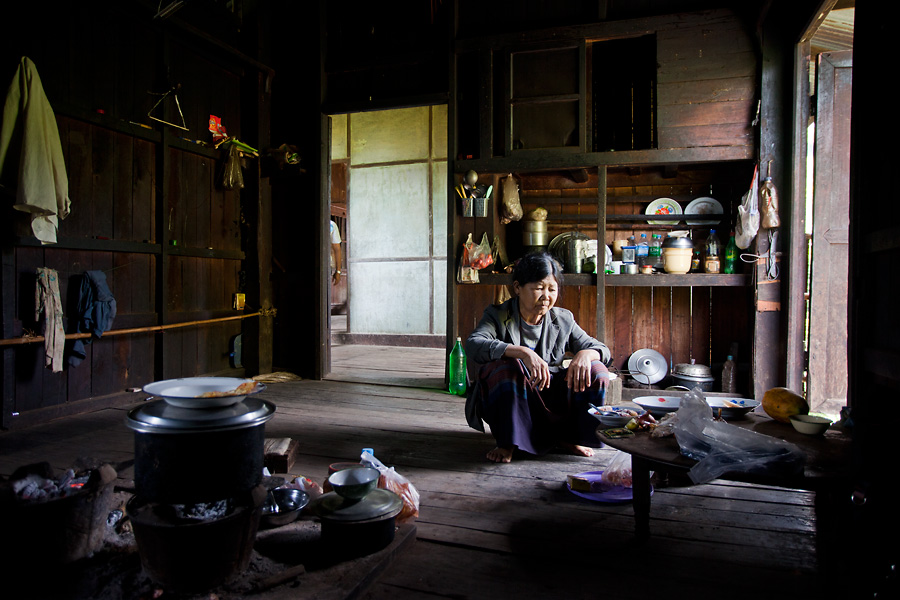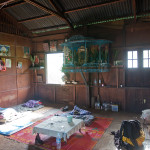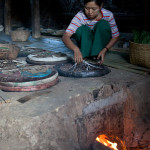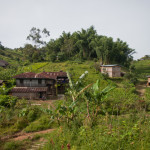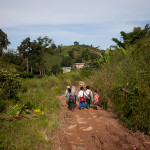Myanmar – PaO people near Inle Lake – Life off the grid in remote Shan Hills
Living just a few kilometers away from the bustling settlements and well-worn paths around Myanmar’s Inle Lake are villages that still live off the grid. A strong sense of community has helped them adapt to the modern world and continue to subsist in a fast-changing country.
My connecting-the-dots from the popular Inle Lake to Shan Hills started as I wandered the streets in search of things to do in the area. A travel-agency boldly announced trekking options, but a smaller sign that talked about a ‘home-stay’ got me interested. The deal was made in minutes and my plans for the next two days was set. I was heading to the hills next morning and stay in a village inhabited PaO people, one of the many indigenous communities in Shan state.
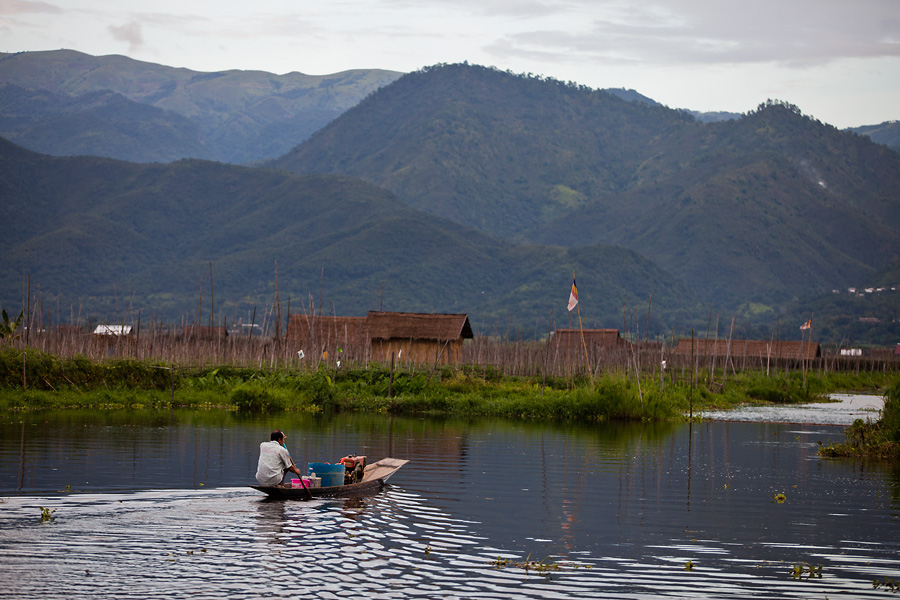
Shan Hills, as seen from Inle Lake.
We began early next morning. It was a pleasant post-monsoon dawn when a thin layer of clouds kept the air crisp – perfect for the long walk ahead. We quickly put behind us the line of restaurants and lodges on the edge of Inle Lake and hiked up the green hills to the east. The path took us up the gentle slopes through the clearings, past wooded sections, occasional opening into corn fields and subsequently through cheerful grassland slopes with a scattering of colourful flowers. The few hamlets we saw along the way were small, with only a handful of houses located adjacent to the fields.
As we walked through the changing landscape, my guide Wei Zoo opened up to my barrel of my questions and spoke at length about himself, his family, his ambition to open a restaurant for tourists visiting Inle Lake, life in the town we came from and the contrast we would see later in the PaO villages along the way.
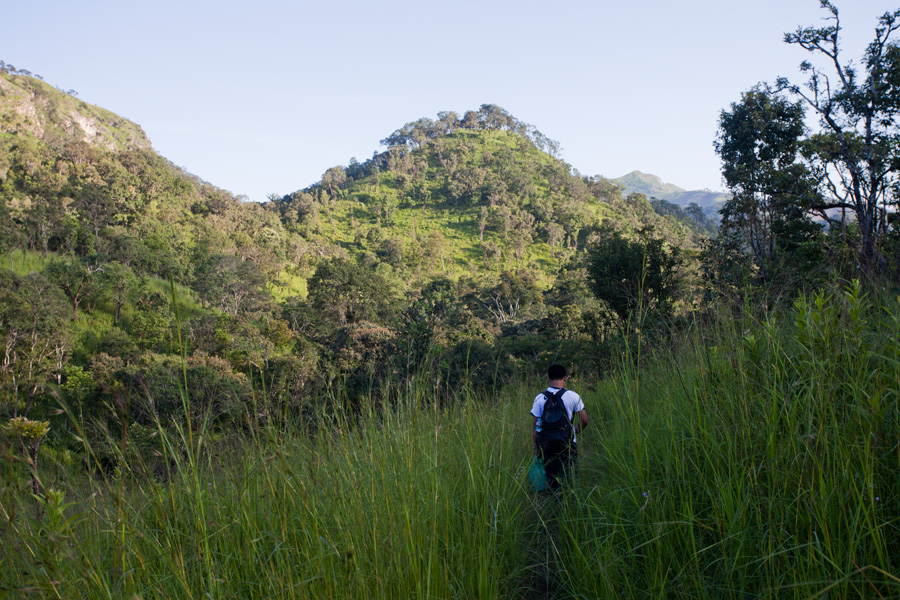
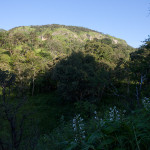
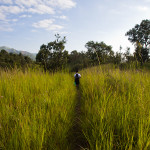

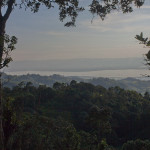
My guide Wei Zoo leads the way on the trek to Shan Hills.
The plains-people and the hill-men have lived in a symbiotic relationship for a long time, producing things that the other party wouldn’t be able to, and exchanging each other’s produce on their way to sustenance and prosperity. In the periphery of the lake, people made a living selling fish or growing rice and vegetables in the marshes. Up in the hills, they collected forest produce and sold it to buy rice, fish or other materials that come from faraway. The only thing they grew on the slopes was cheroot leaves–Myanmar’s favourite puff–that gets packaged by workers in the lake’s many floating villages. The corn-fields I passed along the way were probably a more recent addition limited to lower slopes.
Everyday, a market gathers in one of the five designated floating villages on Inle Lake on a rotation basis, where the hill people arrive in large number to buy and sell. The commute from their village in the hills to the markets below happens in motor-bikes or ox-carts when there is a road, or on feet where there isn’t one. Most hill-villages are connected by unmetalled roads that appear as a snaking brown strip on the otherwise green hills.
These roads, as Wei Zoo puts it, are often made by contributed labour from the people of the village. Even today, the provincial or federal governments do not have much presence in these hills, and local administration is largely managed by village headmen, councils and the monks. They play an active role in the way the village functions, deciding how the land is distributed, managing common facilities and determining how the society functions. That evening, I was to stay in one such self-governed PaO village.
Just when the sun was high and the walk was becoming tiring, Wei Zoo decided it was time for a break. We stopped at PaO home for lunch, which was in a small village with no more than half-a-dozen houses. I exchanged quick smiles with the man of the house before he busied himself at work. They had just harvested a few basket-loads of cheroot leaves, and he was now working at drying them. Freshly picked cheroot leaves were spread on a metal plate. A heavy object–typically a disk wrapped in clothes–was kept on the leaves to press and flatten them. The whole assembly is placed on a long earthen-oven with several openings where these plates can be placed. When the process is complete fifteen minutes later, the leaves come out crisp and dry, ready to be sold in the market. The cheroot-making units on the lake buy the leaves and roll them with tobacco.
By the time our lunch was done, three cycles of drying was done and there was a fairly good stack of crisp leaves piled into a corner.
We moved higher up the hills and walked for about three hours before reaching a village hidden in thick vegetation. This was the largest hamlet I had seen during the day’s walk, having about a score of houses spread randomly on both sides of a wide unmetalled track. I was to stay that night in the biggest house in the village, again owned by a cheroot growing family. The ground level of the house was dedicated to processing and drying cheroot leaves, while the family lived upstairs. A girl was busy drying the leaves, while the lady of the house welcomed me in. She was introduced to me as ‘Daw,’ or aunt.
Daw did not speak much, but took an interest in my well-being immediately. She smiled eternally, never once letting it fade even slightly. Her demeanor was very calm and confident, and her eyes effused compassion and a willingness to care for everyone. Nonetheless, we did not get to speak much. Although she once worked as the English teacher at the village primary school, she could haltingly speak a few words and prefer to be in silence instead. I did not mind either – I was happy to watch her industriousness as she took care of everyone in the family as well as me.
The evening was spent listening to Wei Zoo under a dull incandescent bulb as my dinner was getting ready. The bulb wasn’t connected to a larger grid, but was powered with a small hydroelectricity generator that the villagers had installed at a nearby waterfall. When the water level falls in summer months and the energy generating capacity reduces, the village monastery gets first right for power supply over houses.
Just like electricity, much of the village infrastructure is community-built. The road across the village is built by its own people. The primary school building too, is a collective effort and the teachers are appointed by the village chief.
The village administration’s effort goes beyond setting up the infrastructure; they also play a key role in social and economic issues. The community wields full control of the land around the village, and this is often given to or taken from villagers as needed. When a young man finds his match and wants to start a family, he can request for land from the community. He can usually take as much land he thinks he can work on, but any unused land will have to be eventually returned back. The administrative efforts even reach inside the four walls of a house. Binge drinking and domestic violence can attract a punishment, ensuring that the social order doesn’t breaks down.
Naturally, this appears to be a system that allows everyone in the society to live well, though few, if at all, get a chance to become affluent. A new family starts with a small land holding and a bamboo hut at the edge of their field. Their first goal usually is in building a better house. This process begins with buying and accumulating timber until there is enough to construct a house. Once this is done, wealth is usually stored as gold, as most people are not yet exposed to the banking system.
All this might sound like an exotic and near-utopian land. Perhaps this is true, or perhaps these places have their own problems, but as an outsider who did not understand their language and been here just a day listening to the honest opinions of a tour guide, I may not have deeper insights to their lives. What was apparent was that they were relatively isolated from the modern world. And yet, living not too faraway from the bustling Inle Lake area, they were no strangers to the world outside their society.
With tourism exploding around the lake, life here might change soon too. Perhaps some PaO may find working in tourism industry a lot more lucrative in the days to come. The government has just set aside a large area of land facing the lake as ‘tourism zone’, where several hotel projects are slated to come up soon. For a PaO man who would be searching for opportunities outside their villages, finding unskilled jobs may not be a distant dream. This might just mark the beginning of PaO people’s move into the urban society. Trekking groups and guided individuals like me are already visiting the Shan Hills, which may increase the exposure of these people to tourism.
I could also sense some ecological problems arising in the region in the days to come. Similar to many countries in different stages of modernization, population in the hills seems to be growing fast. One observation that gave strength to this idea was the rapid increase in farmland cleared for agriculture in the recent times, as Wei Zoo told me. This could well lead to environmental issues that people in the hills and the lake area may begin facing in the days to come.
These problems, however, are only speculations of a visitor who has been here very briefly. I wish the PaO live happily as a community, even as they prosper and someday inevitably integrate with the modern world.
About Trekking in Shan Hills from Inle Lake – A quick guide
There are several trekking options in Shan Hills area, varying from a few hours to as long as a week. One of the very popular treks begins from the town of Kalaw and ends in Inle Lake, taking three days or more. While these can be easily booked on arrival either in Kalaw or in Inle Lake (Nyaung Shwe town), it is possible to book ahead through a travel agent in Yangon.
The trek I made was for two days starting and ending in Inle Lake. Any travel agency in Nyaung Shwe town at the edge of Inle Lake can organize this at a very short notice. Day treks and half-day treks are also possible.
